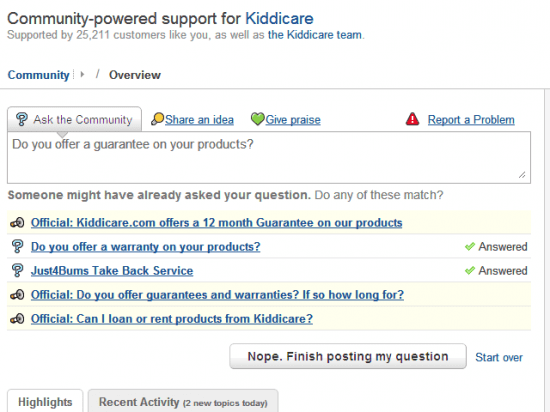9 tips and good practice examples to improve customer service quality through the big five social networks and other tools
 Many savvy marketers have known for a long time that social media is more than just facebook pages and YouTube channels and that these channels have far more to offer than mere ‘brand awareness’.
Many savvy marketers have known for a long time that social media is more than just facebook pages and YouTube channels and that these channels have far more to offer than mere ‘brand awareness’.
Engaging a brand’s customers (and developing a stronger relationship with them as a result) has been one of the main justifications for brand’s investing in social media despite it remaining difficult to demonstrate an accurate ROI for social media activities.
I believe this is missing the point.
Integrate social media across the whole business
Social media should be viewed more broadly across a business and form part of an organisation's structure. And, as brands and businesses start to recognise the importance of integrating social media beyond the marketing or PR teams, it’s difficult to see how a brand can hope to deliver an accurate ROI with so many benefits (and costs) attributed to different parts of the business.
Let’s be clear straight away. I’m not suggesting social media shouldn’t be measured; quite the opposite.
There are many KPIs and metrics brands should be using to assess performance across social media. However, attempting to deliver a magical ROI figure for activities which can impact sales, branding, customer service, recruitment, and more, can seem an unachievable goal.
Use social media to enhance customer service
Customer service is a good example of this. Many brands are using social media to improve customer support, but how do brands put a value on this? Do they need to?
I heard David Whitley, Head of Marketing at London Midland, talk about the incredible effort they’d made to develop a leading customer service experience on twitter - take a look at its feed to see this in action.
This service enhancement has led to substantial changes in the way the company is viewed by its customers.
How do brands value this? Do they need to?
Seth Godin, author of Permission Marketing, strongly believes customer service is one of the best forms of marketing. And, the adoption of social media by brands to better engage customers is a great way to start down this path. I strongly agree.
Social media is just another way to talk to, and engage with, your customers
After all the bells and whistles are stripped out of social media platforms, a very basic question still needs to be answered;
“Are our customers actually going to benefit from introducing this functionality?"
There are plenty of examples of brands that have tried and failed to introduce something new. These projects often arise because senior management have got caught up in the hype. There’s a ‘me too’ attitude when competitors introduce something new, or perhaps they simply want the latest toy to play with.
As I hear a lot of marketers frequently say, at its simplest social media is just another way to talk to, and engage with, customers.
Get Satisfaction - a new help platform
I’ve introduced this help platform to several brands.
This platform's combination of an intelligent FAQ system and a help forum allows customers to find the answers they seek more quickly.
Of course, Get Satisfaction also has all the social plugins to enable integration across a number of social platforms. So, brands can easily extend their customer service reach to places like a Facebook page.
Here's an example that sits nicely within a brand's facebook page:

The ‘Do any of these match your question’ feature is really useful; when the customer has entered their question, this function retrieves existing questions with similar titles. Consequently the customer often never has to post their question and wait for a response because they find their question has already been answered.
You can see a couple of examples of Get Satisfaction in action by visiting the Techsmith or Crystal Summer.
Kiddicare delivers great customer service by integrating 'help' with product pages

Kiddicare has gone one step further, incorporating its Help community (provided by Get Satisfaction) into its website's product pages - take a closer look on its website. You'll notice Kiddicare also pulls FAQs through based on its ordering process; a clever way to address customer queries at the relevant purchase point.

Brands benefit from better customer service too
Making key questions and, more importantly, their answers, viewable to all means future inbound queries should reduce in number. In fact, one of Get Satisfaction's case study examples claims to have reduced inbound support tickets by 75%.
Also, frequent reviews of the types of questions received enables a brand to identify opportunities to develop its content; i.e. if lots of customers keep asking a specific question, it’s likely the brand isn't sufficiently explaining, or promoting the answer to that question across its communications channels.
Tips to manage Help forums like Get Satisfaction
- Be prepared - inviting customers to ask questions can lead to a deluge of additional work. Think about where the customer is in their journey. Depending on where and how Help is implemented will determine the volume and type of questions received.
- Make use of the responses - to avoid repeat questions in the future.
- Link answers back to a website where possible - to help drive customers to the most up-to-date source of information. Tracking these links will help marketers track just how many people are using the content to help answer their own questions.
- Consider pre-populating the forum with your own FAQs before inviting others to start asking questions - providing official answers will help resolve more customer queries and reduce the number of 'me too' questions.
General tips to manage customer service through social media
- Be prepared for a greater volume of questions - people asking on any platform (twitter especially) expect an almost instant response. Brands need to be sure they can deal with (and answer) any increase in the volume of questions.
- Have a strategy to deal with complaints and issues – think about how the brand will deal with complaints in an open forum. There needs to be a balance between what a brand does publicly to be seen to be dealing with a customer’s complaint, and taking the complaint offline to deal with it in full.
- Be consistent – the way a brand responds to customers will be noticed.
- Be careful of setting a precedent - this is closely linked to point '2'. If dealing with a complaint, does a brand really want to offer a refund on a product in full view of thousands of people on facebook?
- Get the experts to answer - this relates to one of my earlier points about social media being integrated across a business. The best people to respond to a sales question on twitter are members of the sales team. Likewise a customer service question on a help forum should be handled by someone from the customer services team.
Customer service is just one area where brands are really starting to take advantage of the online channel, given the large array of social tools now available to help them deliver great service.
If you have any questions, or can think of some good (or bad) examples, please leave a comment below.









